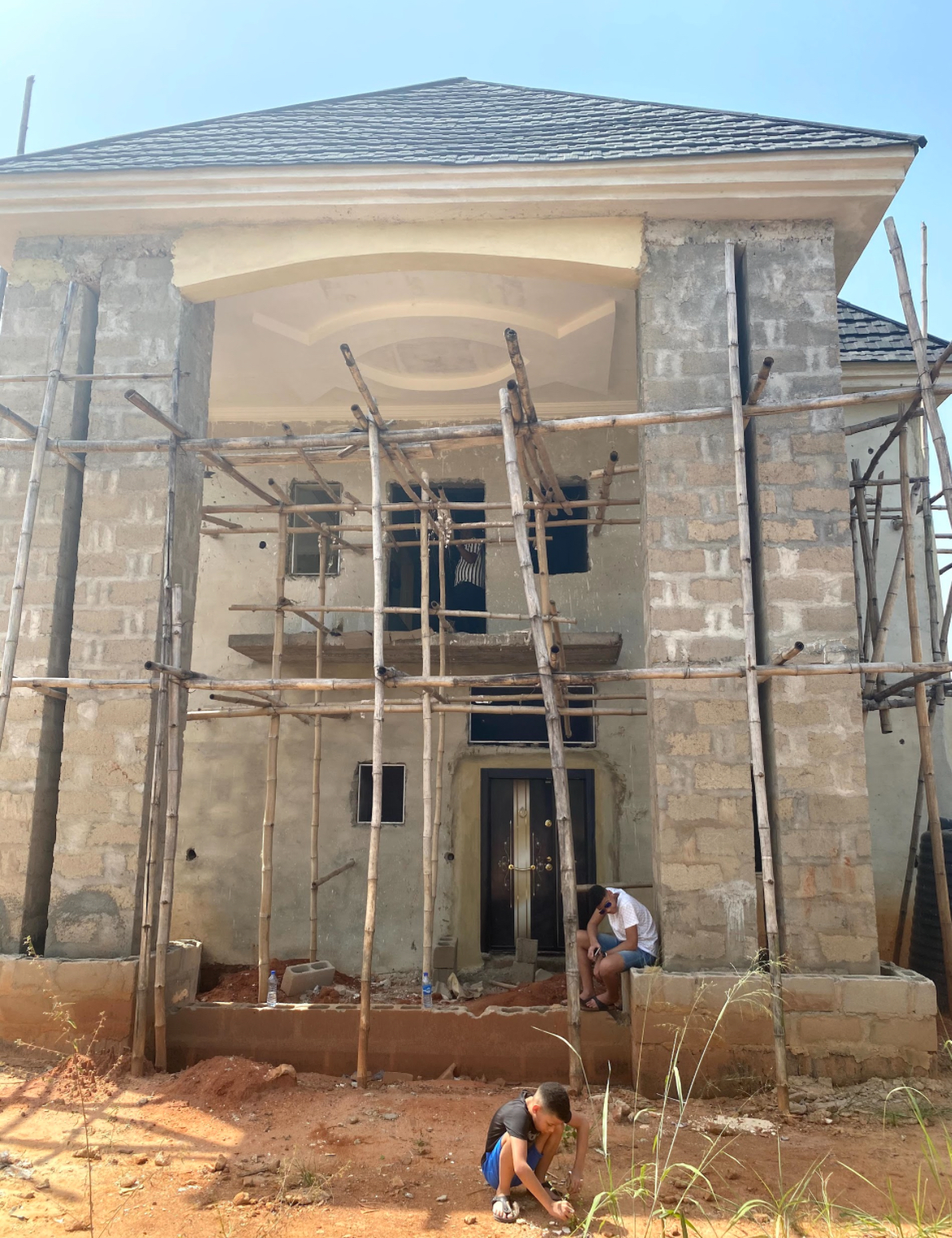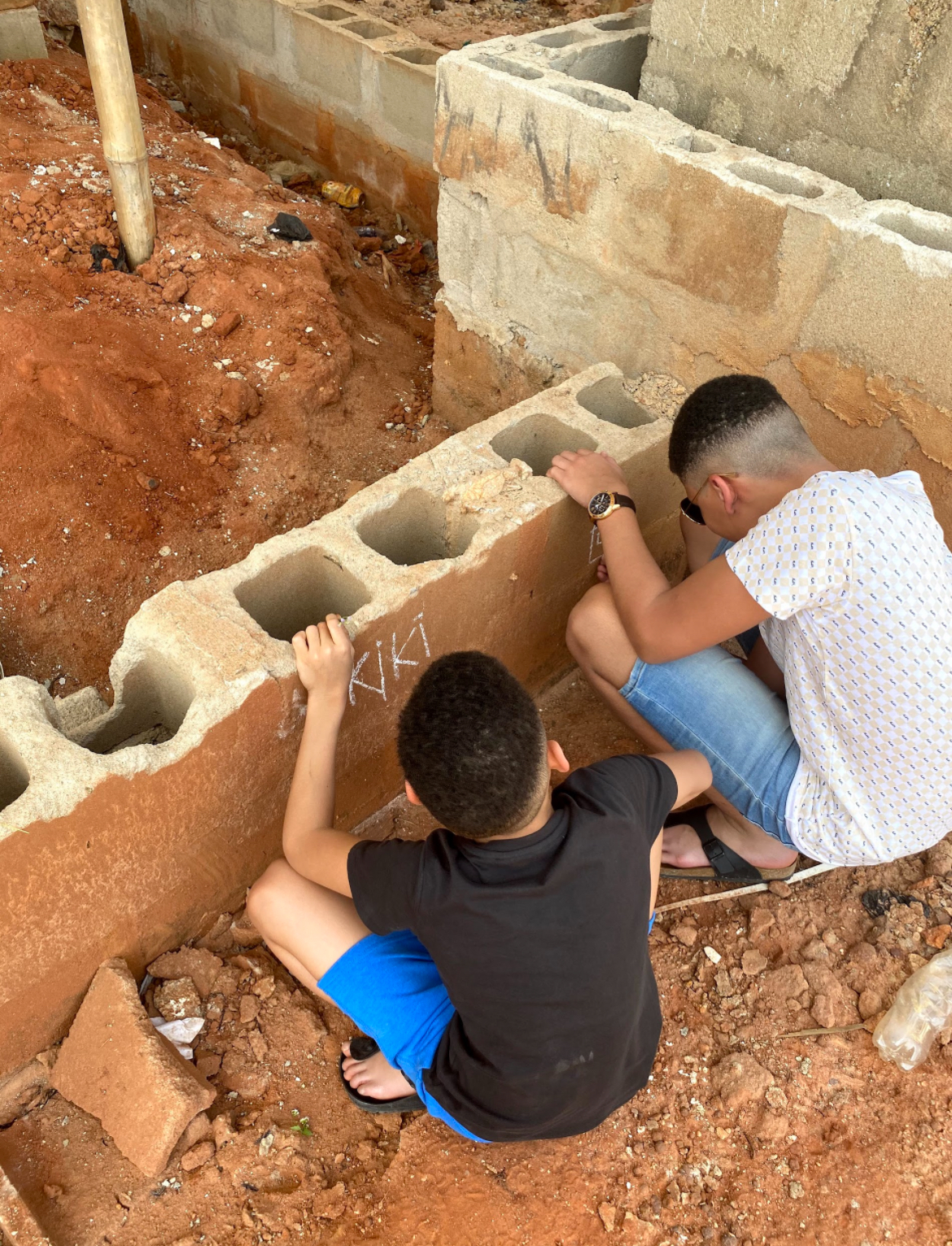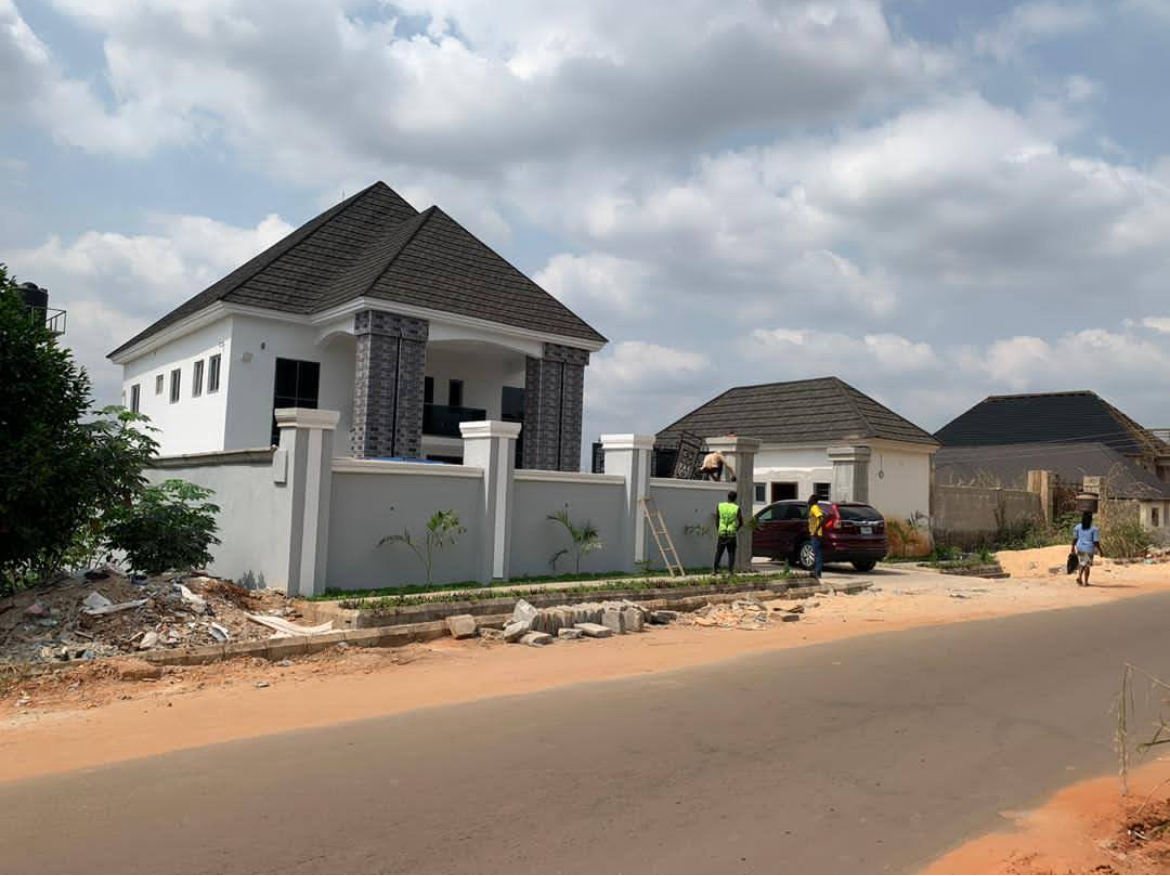How We Built a House in Nigeria 🏠
Can you build a house in Africa remotely?
You can't. If you're thinking about it, don't do it 😄
It all started with a small piece of land in Nigeria: sunshine, a little field where locals grew yam - something people commonly do on unused plots until the day a buyer shows up. There was a beautiful mango tree I desperately wanted to keep, but the house wouldn't fit, so down it went.
In 2018 my husband bought the land. Romance, African-style? Only until we discovered the neighbor's plot sat a meter and a half higher. So the first chapter of our house was written by trucks full of soil driving back and forth for two days until the ground was level. The tall foundations stood in the middle like a monument.
There's an old rule here: what you see with your own eyes is what you really have. Finding tradespeople? Possible. Finding someone who supervises from dawn till dusk? That's another sport. In the end my husband had to fly in twice and stand on site as the foreman. Back home, hardly anyone would try it without professional equipment. Here it's standard - it works, but only with supervision. On the other hand, I really have to say that I admire them. In such heat, one is glad just to manage being outside at all, and yet they worked with incredible dedication.
A house that breathes
We didn't want a palace - we wanted a home that survives heat and downpours.
-
Hollow bricks for the walls: light inside, solid outside.
-
A high metal roof so hot air can escape upward - although to be honest, I'm not sure how much it helps, because there's a normal ceiling and above it a non-walkable attic as tall as a church tower.
-
Windows with metal frames that withstand rain and dust. And then came the magic: POP ceilings—plaster ceilings shaped by locals right on site, not from pre-cut pieces but cast into molds and hand-carved. Watching them conjure gentle curves and profiles from a flat surface in a single day, you feel the joy of craft. From that chapter we're left with photos: bamboo scaffolding like a spiderweb, and us balancing between the poles, full of expectation.


Rain in Africa doesn't come "a little." It comes all at once. If you don't ask the weather, the weather asks for you. That's why we had to dig a drainage channel in front of the house- also for our neighbors. There's no conventional sewer system in Nigeria; street runoff is handled by deep channels along the roads.
In the main bathroom, some Pat-and-Mat type set the slope the wrong way. Water shot out of the shower, hugged the toilet, and said hello to the bath mat. If it weren't ours, we'd laugh more. That day we learned a simple truth: water is the best physics teacher. Fix it, dry it, and above all—check the slopes before anything gets "set in stone." One day we'll supposedly have it redone; for years I've been making peace with the idea that we probably never will :D
There are things you imagine differently. The kitchen is shallower than it deserves. Here and there, a centimeter went missing. And yet, when you sit down in the evening and watch light break across those beautiful ceilings, you realize a house is like a relationship: never perfectly straight, but it's ours. Besides, Africa can be a fairytale place to live, but you need the means. A standard life with a roof over your head and at least a half-full fridge can easily cost more here than it does back in Europe. And that's not even mentioning how much a house like this - or even a smaller one - would cost us in the Czech Republic. Right now, it would simply be impossible.
So at least we have it here.
My nesting instincts finally calmed down knowing we have our own home - even if it's a bit farther away.
Building it taught us patience and the joy of small victories. But it was worth it. 💛

